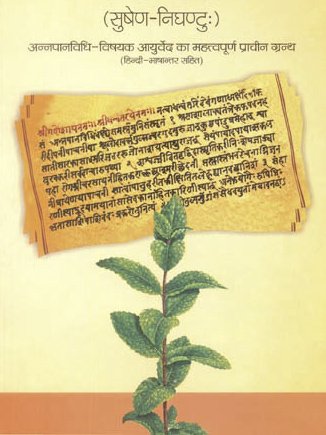Nattam-takarai, Nattam-takārāī, Nattamtakarai: 3 definitions
Introduction:
Nattam-takarai means something in Hinduism, Sanskrit, biology. If you want to know the exact meaning, history, etymology or English translation of this term then check out the descriptions on this page. Add your comment or reference to a book if you want to contribute to this summary article.
In Hinduism
Ayurveda (science of life)
Nighantu (Synonyms and Characteristics of Drugs and technical terms)
Source: WorldCat: Rāj nighaṇṭuNattam-takārāī in the Tamil language is another name for Pṛśniparṇī, a medicinal plant identified with Senna occidentalis (formerly known as Cassia occidentalis Linn.) or “septicweed” from the Fabaceae or “legume” family of flowering plants, according to verse 4.171-172 of the 13th-century Raj Nighantu or Rājanighaṇṭu. The fourth chapter (śatāhvādi-varga) of this book enumerates eighty varieties of small plants (pṛthu-kṣupa). Other than the Tamil word Nattam-takārāī, there are more synonyms identified for this plant among which eight are in Sanskrit.

Āyurveda (आयुर्वेद, ayurveda) is a branch of Indian science dealing with medicine, herbalism, taxology, anatomy, surgery, alchemy and related topics. Traditional practice of Āyurveda in ancient India dates back to at least the first millenium BC. Literature is commonly written in Sanskrit using various poetic metres.
Biology (plants and animals)
Source: Wisdom Library: Local Names of Plants and DrugsNattam-takarai in the Tamil language is the name of a plant identified with Senna occidentalis (L.)Link from the Caesalpiniaceae (Gulmohar) family having the following synonyms: Cassia occidentalis. For the possible medicinal usage of nattam-takarai, you can check this page for potential sources and references, although be aware that any some or none of the side-effects may not be mentioned here, wether they be harmful or beneficial to health.
Source: Google Books: CRC World Dictionary (Regional names)Nattam-takarai in India is the name of a plant defined with Senna occidentalis in various botanical sources. This page contains potential references in Ayurveda, modern medicine, and other folk traditions or local practices It has the synonym Cassia ciliata Raf. (among others).
Example references for further research on medicinal uses or toxicity (see latin names for full list):
· Journal of Ethnopharmacology (1991)
· Taxon (1997)
· Journal of Ethnopharmacology (1992)
· Histoire Naturelle et Médicale des Casses (1816)
· Synopseos Plantarum (1805)
· Kagoshima University Research Center for the Pacific Islands, Occasional Papers (2001)
If you are looking for specific details regarding Nattam-takarai, for example side effects, diet and recipes, health benefits, chemical composition, pregnancy safety, extract dosage, have a look at these references.

This sections includes definitions from the five kingdoms of living things: Animals, Plants, Fungi, Protists and Monera. It will include both the official binomial nomenclature (scientific names usually in Latin) as well as regional spellings and variants.
See also (Relevant definitions)
Partial matches: Nattan, Nattam, Takarai.
Query error!
Full-text: Kasamarda.
Relevant text
Search found 1 books and stories containing Nattam-takarai, Nattam-takārāī, Nattamtakarai, Nattamtakārāī, Nattan-takarai, Nattan-takārāī, Nattantakarai, Nattantakārāī; (plurals include: takarais, takārāīs, Nattamtakarais, Nattamtakārāīs, Nattantakarais, Nattantakārāīs). You can also click to the full overview containing English textual excerpts. Below are direct links for the most relevant articles:
Journal of Ayurveda and Integrative Medicine
Puttur kattu (bandage) – A traditional bone setting practice in south India < [Volume 2 (issue 4), Oct-Dec 2011]